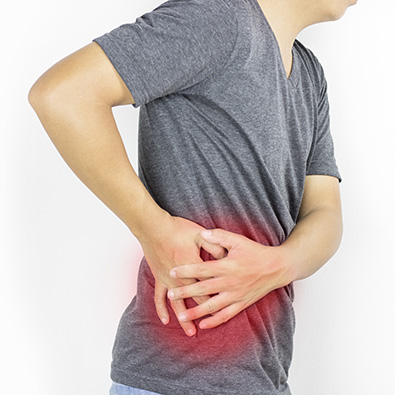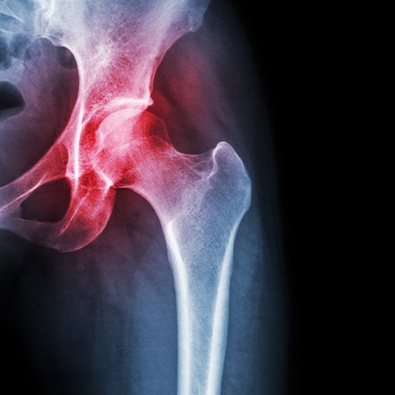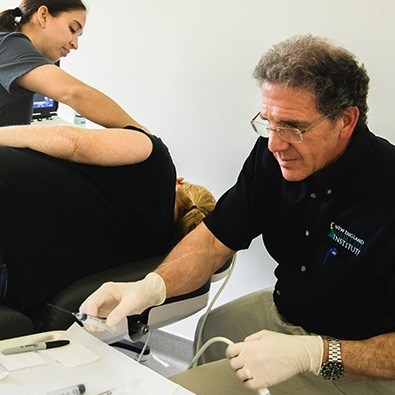
Fax: (860) 430-9693
Glastonbury, CT 06033

After the knee, the hip is the most commonly affected joint regarding osteoarthritis (the "wear and tear" kind"). Osteoarthritis is also known as "degenerative joint disease." Osteoarthritis (OA) occurs when inflammation and injury to a joint cause a breakdown of cartilage tissue. Many people believe that a loss of cartilage causes arthritis. But in actuality, the loss of cartilage is a result of injury and/or chemical changes inside the joint. The primary function of cartilage is to reduce friction in the joints and to serve as a "shock absorber." So, a loss of cartilage can cause pain, swelling, limited movement, and deformity. Although cartilage may undergo some repair when damaged, the body does not grow new cartilage after it is injured. We offer solutions for treating hip osteoarthritis in Glastonbury, CT at Valley Sports Physicians & Orthopedic Medicine.

As noted above, the most common symptoms of hip OA are pain and a limited range of motion. Some people may feel a pinching or catching sensation. Because the hip is both such a deep joint and also so centrally located in the pelvis, the symptoms of hip OA can be felt in many different places including the groin, the front of the thigh, the side of the hip, the buttocks, and even in the low back, knee, and foot/ankle. Conversely, pain can be referred TO the hip from the low back or knee. Usually, pain from OA is worse after prolonged inactivity such as sleeping or watching a movie, or from too much activity. However, mild or gentle movement often seems to help.

The history, physical exam, and x-rays are all needed to make the diagnosis. MRI is not required but may be helpful to evaluate for other problems such as a labral tear. However, it's important to note that simply have x-ray evidence of arthritis doesn't mean that the pains coming from that joint. Over the years we've seen many patients in whom the joint that has less arthritis on x-ray actually has MORE pain than the joint that has worse arthritis! However, there is a remarkably simple and safe way to determine how much of your pain is coming from your hip. In our office, we simply inject some Novocain into the hip joint under ultrasound guidance. If the pain goes away it's coming from the hip; if the pain doesn't go away it's coming from somewhere else!

In our practice, we divide treatment for arthritis into two broad categories: Conventional treatments and Alternative treatments. Conventional treatments include anti-inflammatory medications such as Aleve, ibuprofen, Advil/Motrin, Mobic®, etc.; cortisone injections; physical therapy; and surgery (which is always a very last option in our opinion). Additional conventional treatments can include nutritional treatments such as glucosamine & chondroitin, turmeric/curcumin, and other natural anti-inflammatory supplements. One nutritional supplement that can be helpful for arthritis is Arthroben®, which is a powder derived from plant sources that have natural anti-inflammatory properties. We do NOT support or encourage the use of repeat cortisone injections for the treatment of arthritis. Studies have shown that steroids are actually toxic to the cartilage in the doses used by most physicians. So the use of repeat cortisone injections is simply a sure-fire way to speed up the deterioration of the joint!